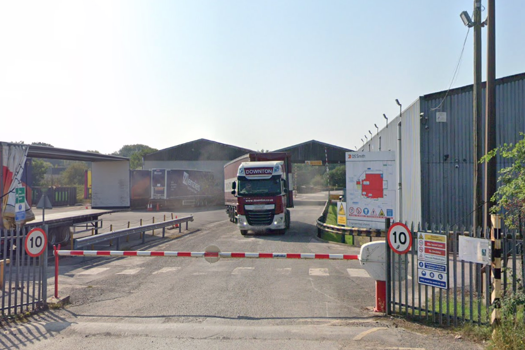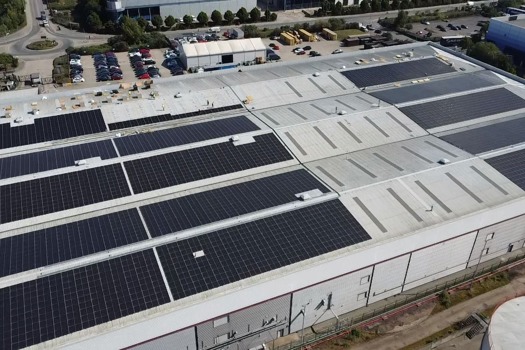The ethos of that initial consultation has evolved substantially into the legislation facing organisations today, which requires private and third-sector companies with more than 250 employees, or more than around £40m annual turnover, to complete a thorough energy audit – at cost – outlining areas where savings can be made, and suggesting recommendations for reducing energy use. There’s no incentive for completing an audit beyond the data it reveals as it’s not mandatory to implement the recommendations. Penalties for non-compliance, however, are severe: at £45,000-plus fines are designed to be higher than the cost of assessment.
And the deadline is nearing – audits must be completed by 5 December.
Former climate change secretary Ed Davey claims firms could save over £250m on their energy bills by cutting energy consumption by less than 1%, while the thinking behind ESOS is that it’ll save around £2bn across UK big business altogether. Meanwhile, the Department of Energy and Climate Change (DECC) says organisations that take up ESOS energy efficiency recommendations and invest £15,000 per year in energy efficiency measures could benefit from bill savings of approximately £56,400 per year.
On paper these statistics are certainly appealing, especially for the print industry which is a big consumer of energy. Reduced energy use means less expenditure, which is good news for already tight margins. But of the printing companies bound by compliance, few have welcomed the legislation.
An issue of compliance
“The vast majority aren’t affected,” says Steve Walker, commercial products manager at the BPIF. “It’s only the larger ones, and these are the businesses that are already taking energy efficiency seriously, simply because it affects the bottom line so much, and because environmental credentials are something customers are increasingly looking for. As such, many printers view the whole thing as burdensome bureaucracy, rather than something that could yield real benefits.”
Walker says that only four companies within the BPIF membership have asked for information about the scheme, with the rest aware of their obligations and just looking to get it done as cheaply as possible. “For them it’s simply an issue of compliance,” he adds.
It’s not extra paperwork or a demand on manpower that has disgruntled so many companies, but rather the expense involved. With the legislation demanding assessments be carried out by qualified ESOS professionals (many of whom have scrambled for accreditation since the scheme was announced), audits can cost as much as £50,000 – a not-insignificant sum that can make a sizeable dent in any savings already reaped through energy efficiency efforts.
Stick, not carrot
The fact that companies are not obligated to follow through with their audit recommendations makes the situation harder to swallow, says Walker. “Organisations are already looking at energy efficiency, and now they have to pay someone to tell them something they already know – and even if they don’t, they don’t have to do anything with it. It’s no surprise so many are wondering what the point of it is. Unlike the Climate Change Levy scheme, which has saved around £7m a year for the industry, there’s no real incentive.”
Some large printing companies, such as Polestar, have managed to drive down the cost of compliance to a more reasonable level. “Some of the quotes we had in the early days were three times as much as we’ve actually ended up paying,” says Gary Marshall, group risk manager at Polestar UK. “And as the deadline for submitting audits draws nearer, assessors are in higher demand which drives up the cost. Smaller organisations that aren’t yet ESOS-prepared are going to have to find a lot of upfront capital to get through this costly exercise.”
But despite partnering with an organisation that has reduced the amount Polestar has to pay, Marshall adds: “Even for the small amount of money we’re spending, we’d prefer not to be spending it.”
However, the company has found a silver lining in ESOS – albeit a faint one. “We’re already carrying out enormous energy efficiency projects,” says Marshall, citing the group’s major reinvestment in web offset technology from Goss International. “It’s a multimillion-pound undertaking and we expect energy savings of at least 25%. So we’re working with our ESOS assessor to write into the recommendations the work we know we have to do, and the work we’re planning on doing already, so that becomes what our chief executive signs off.
“We won’t have any money left over for further energy improvements at this stage. We’re anticipating already enormous savings, so we don’t really want to be paying someone to tell us we could save an additional 1% by getting our doors to shut quicker.”
Marshall adds: “Companies should be undertaking their own projections every year, and working towards lowering their energy usage, legislation or no legislation. We don’t need ESOS to tell us that. We’re a high-energy industry, it’s in our best interests to be on top of it.”
For Polestar – and many other companies – any recommendations made by an ESOS audit are unlikely to be surprising. But there are a very small handful of printers that are prepared to embrace the legislation, rather than merely tolerate it.
Richard Owers, director at Pureprint, says that even though the assessment is “certainly costing a few thousand pounds, it’s getting us to do something that we haven’t looked at before”.
Considering Pureprint is well known for its environmental credentials and boasts a range of accolades – including holding EMAS accreditation longer than any other print business in the UK, being the first carbon neutral printer in the world and winning the Queen’s Award for Enterprise for Sustainable Development no less than three times – it’s perhaps no surprise that the company is embracing the legislation with open arms.
“The data we get will be quite valuable for us,” says Owers. “We’ll certainly save more money from implementing recommendations than we will spend on the cost of the assessment.”
The company expects to save around ten times the cost of the assessment, which, while short of the government’s estimate that most companies could save around 13.5 times the amount, still adds up to a worthwhile pursuit for Pureprint. And, as Owers acknowledges, the audit represents an opportunity to get to grips with new and emerging technology.
“It is an expense, but it’ll be worth it. Constant change in the energy efficiency arena, especially when it comes to things such as heating and lighting, means there’s a rapidly developing area of technology to keep up to speed with. A thorough audit by experts in the know will present us with options we might not be aware of.”
He adds: “No, the recommendations are not mandatory, but if a company is presented with a step-by-step guide to saving, say, £50,000, why would they not?”
However, according to Steve Walker, companies like Pureprint are the exception, rather than the rule. “You’d be hard pushed to find a company that needs to comply that can save more money through recommendations than the amount they’re spending on ESOS itself,” he says, and notes that while “ESOS might be pertinent in some industries, it’s not in ours”.
Like it or lump it
So what’s the alternative? Clearly blanket legislation across big business presents issues – particularly for industries that are already on the energy efficiency ball – but as Walker admits, implementing legislation like ESOS with specific industries in mind “would be far more complicated.”
Instead, he suggests the requirement to conduct an energy review internally and publishing the results. “It’s an added cost but one that’s far less than paying an outside consultant, who’s basically just borrowing your watch to tell you the time.”
But with the deadline for submitting audits fast approaching and the penalties for non-compliance high, companies bound to comply with the scheme have little choice in the matter. “At this late stage, they can only work on getting it all done as efficiently as possible,” says Walker. “According to the current legislation, we’ll have to do it all again in four years’ time. Hopefully the situation will be a little different by then.”









